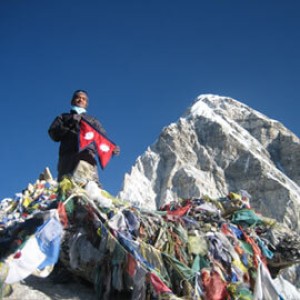Not properly working my body function to acclimatize to the reducing amount of the oxygen available above the elevation of 2400-2500m is known as Acute Maintain Sickness (AMS). If you follow the simple advice of our trained guides, you won’t have to worry about complications from mountain sickness. Nepal Mother House designs all our tours to ensure that clients are ready for high altitudes and arrange alternative itineraries for those at risk.
The initial symptoms of AMS are as follows:
# Nausea, vomiting
# Loss of appetite
# Dry cough
# Short breath
# Insomnia/sleeplessness
# Persistent headache
# Dizziness, light headedness, confusion
# Disorientation, drunken gait
# Weakness, fatigue, lassitude, heavy legs
# Slight swelling of hands and face
# Breathlessness and Breathing irregularity
# Reduced urine output
# Irritability & weakness
# Sleep disturbance
Causes Acute Maintain Sickness (AMS):
*Low pressure, less oxygen
*Rapid ascent
*Dehydration
*Hypothermia
Types of AMS (Acute Maintain Sickness):
[I] High Altitude Pulmonary Edema (HAPE)
HAPE is caused by an accumulation of fluid in the lungs. As it progresses, more and more fluid builds up until the victim literally drowns.
Symptoms:
*Severe headache
* Repeated vomiting
*Blurred & double vision
*Abnormal behaviors
*Misbalance
*Sleep disturbance
*Less urine output
[II] High Altitude Cerebral Edema/Brain (HACE)
HACE is the most serious of the forms of AMS and is caused by a buildup of fluid around the brain. The previously mentioned symptoms of mild AMS rapidly worsen, particularly the headache along with slurring of speech and ultimately unconsciousness and death. The advance of the problem can be very rapid and death can occur in twelve hours if treatment is not given.
Symptoms:
•Chest pain
•Cough with plenty of sputum & blood
•Difficulty in breathing during rest
•Sleep disturbance
•Less urine output
•Blue lips/thong’s apex
. Occasionally blueness around the lips
.Difficulty breathing and rapid pulse rate even at rest
.Coughing pink, frothy sputum
Pre-Hospital Treatment:
*Mild-
Rest at the same altitude until symptoms wane.
* Severe-
1. Descent, Descent, Descent…
2. Give Oxygen (2-4 liters/minutes)
3. Give Diamox (250mg*12 hours)
4. Place in a pressure bag (Gamow bag)
The Best Treatment of AMS is Prevention:
The following points are very important for preventing the AMS.
1, Awareness of AMS.
2, Go up slowly. While walking above 2500m elevation, ascend 300m per day.
3, Take rest 1 day after every 3 to 4 days walking.
4, Drink a lot of fluids (3 to 4-liter of water per day).
5, Avoid hypothermia.
6, Do not carry more than 10 kg in your pack.
7, Do not use alcohol, sleeping tablets, or smoke.
